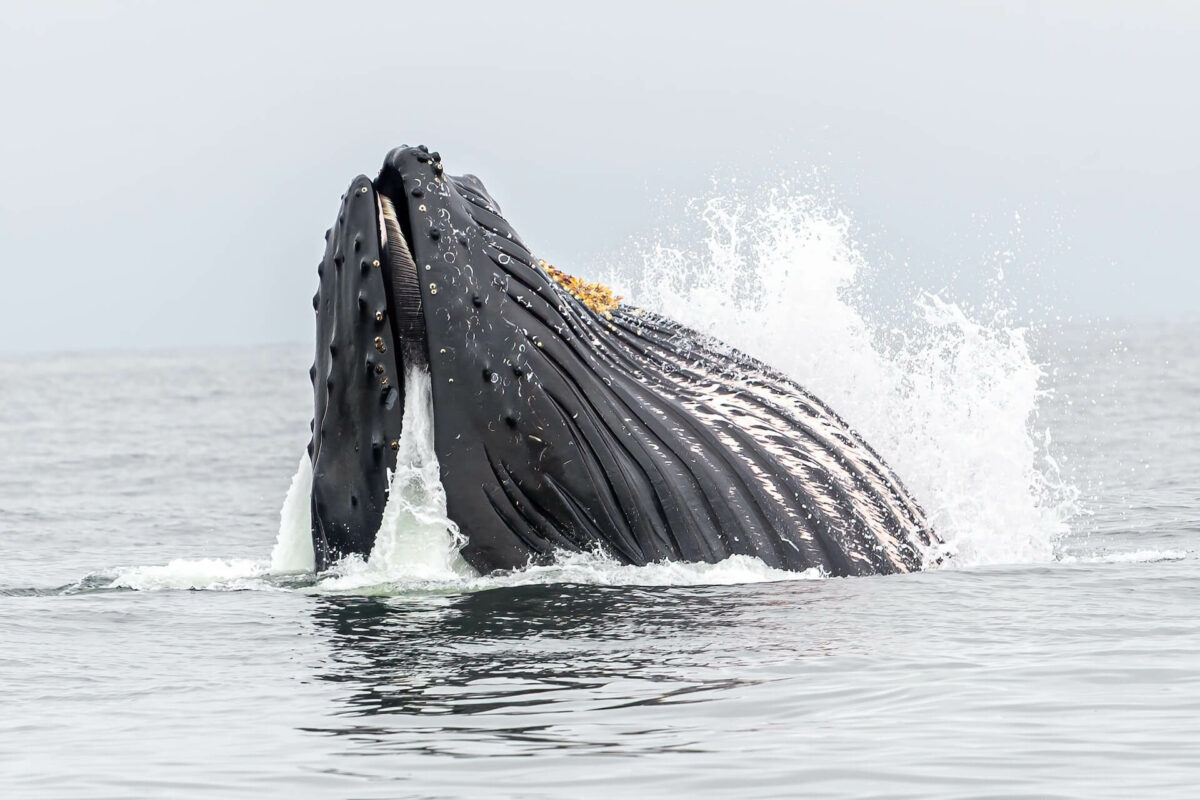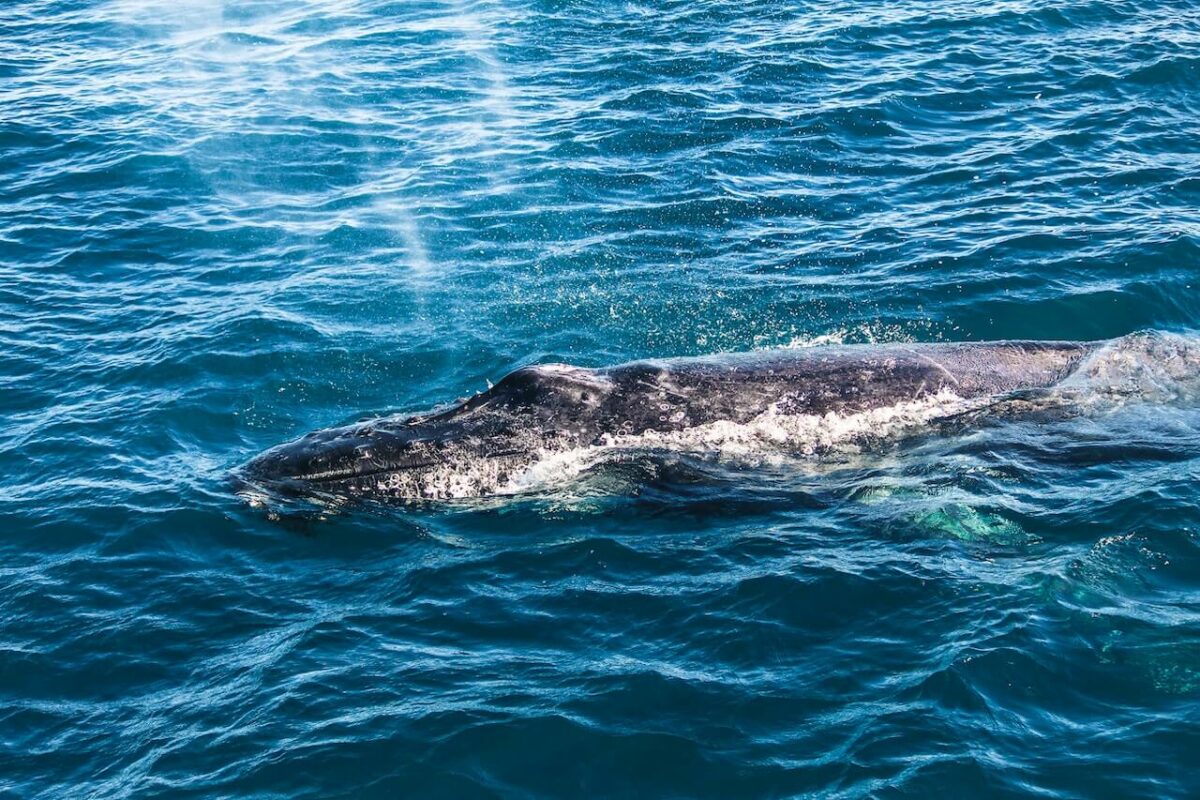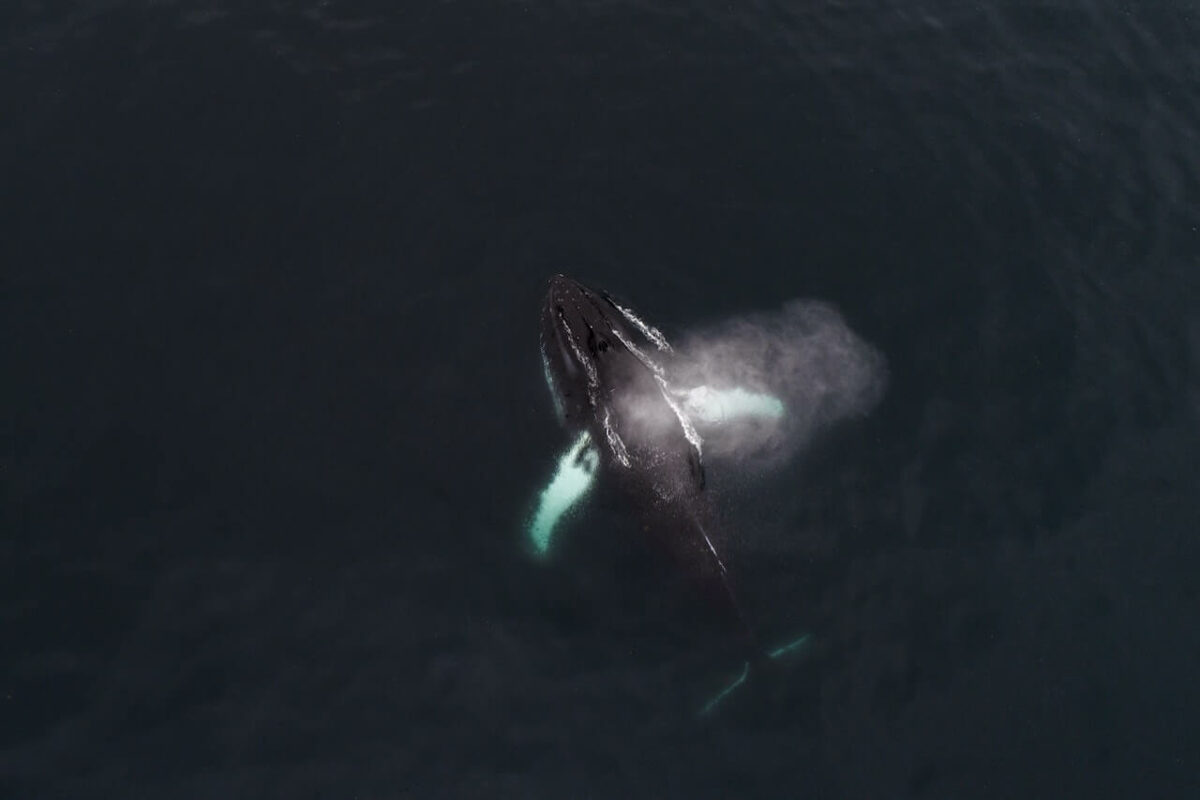Whales are fascinating marine mammals that can be found in all oceans around the world, from the icy waters of the Arctic to the warm tropical waters of California.
These ocean giants are notorious for their enormous size, vocalizations, and incredible intelligence, but have you ever wondered if whales have hair?
If so, you’re in the right place!
Do whales have hair is a common question that many people find themselves wondering, and the answer may surprise you.
So let’s dive in and discover the truth about whales and their hair.
Do Whales Have Hair?
Whales are marine mammals, which means they are warm-blooded, give birth to live young, females secrete milk to nourish their young, and possess hair.
So YES, whales DO have hair. All whales a born with hair, but most lose it shortly after they are born and it becomes much less visible.
Whales are known for their streamlined bodies which seem to lack any type of hair or fur, but it’s true that many species do have hair but it’s just not visible to the naked eye.
You know the golfball-sized lumps you see on a humpback whale’s head?

Those each house a hair follicle, with fin whales, sei whales, bowheads, and right whales all having hair follicles too.
In fact, there can be between 30 and 100 of these hair follicles depending on the whale species, but they are not visible because they hair is very short.
It doesn’t make sense for whales to have thick hair as this would cause too much resistance whilst swimming in the ocean, slowing them down and making it more difficult for them to swim.
Why Do Whales Have Hair?
The truth is, we don’t know why whales have hair and its function in these ocean giants, but there are some theories.
Firstly, whales are mammals, and having hair or fur is a feature that is mammalian, with hair being found on all mammals at some point in their lives.
Each hair follicle is surrounded by nerves, which likely perform a sensory function similar to how whiskers in cats do.
This may allow whales to sense movements in the water or assess prey densities to tell a whale when there is enough fish in a school and if it’s worth feeding or not.
Another theory is that hair on whales is a remnant from their evolutionary past when they were land mammals and relied on hair for warmth and insulation.
As whales evolved to live in the ocean, it’s likely that they lost their hair as it was no longer necessary and was more of a hindrance than anything else.
Another possibility is that hair on whales plays a role in maintaining their balance and stability in the water.
Their hair may allow them to sense movements in the water and they may adjust their bodies to ensure they remain upright.
Hair may also be used in social situations, such as if a calf needs to notify its mother that it’s hungry and needs to feed.
It’s not fully understood why whales have hair, but it’s clear that hair is more important in some whales than others.
Hopefully, we learn more about why whales have hair in the near future as scientists continue to study this mystery.
What Is Whale Hair Called?
The hair on whales is a type of keratin structure that is often called “bristles” or “vibrissae”.
Whales are born with “sensory hairs” along their head and jawline which help them to detect changes in their environment.
Most species shed these hairs shortly after they are born, but others seem to hold onto these hairs and use them for a number of reasons.
Even in whales that keep their hair, they are so small that the hair is barely visible and can only be observed when up close to the animal or through a microscope.
Yep…they are that small.
Whales don’t rely on their hair for insulation like land mammals, and instead, use them for sensory functions so they don’t need a thick coat of hair.
Where Do Whales Have Hair?
Whales don’t have visible hair located on their bodies, but instead, they tend to have small hairs around their mouth and on top of their heads.
They are usually short and stiff hairs that help the whale know what’s going on in its immediate environment.
Whilst most whales will shed these hairs completely, some species such as the humpback whale has these hairs on their jaw called tubercles, and each tubercle contains one sensory hair.
You can quite literally count the number of hairs a humpback whale has by counting how many lumps the whale has on its head.
Do All Whales Have Hair?
All whales are born with hair, but not all whales keep it or have visible hair on their skin or bodies when they grow into adults.
Most whales will shed all of their hair, but some species such as humpback whales and blue whales have hair follicles scattered across their bodies, but mainly around their heads.

Bowhead whales are a species that are mostly hairless aside from two patches of more than 300 hairs on the rostral tip of the lower lip and chin, and the rostral tip of the upper lip, and a bilateral row of approximately ten hairs caudal to the blowhole.
Some whale species rely on hair more than others, but it’s difficult to see the presence of hair on all whales without getting up close and personal.
Wrapping Up
It’s true that all whales DO have hair at some point in their lives as they are marine mammals that have all mammalian characteristics.
BUT, many whale species lose their hair completely shortly after birth as it is simply not needed for them to survive.
However, other species keep their hairs, which serve a sensory function similar to whiskers in many terrestrial animals and help them identify changes in the ocean.
This could be anything from water temperature to prey availability, and it’s clear that in some species hair plays an important role.
Whilst the role of hair in some whale species is not fully understood, there are some strong theories as to why some whales have hair and the purpose it serves.
Thanks for taking the time to read this post and learn more about whales.
Catch you in the next one!

Hi, I’m George – the founder of MarinePatch. I created this blog as marine wildlife has been my passion for many years. I’ve spent over a decade in the marine wildlife industry and spent years out in the field conducting research. In today’s modern world, an online blog is the best place for me to share my findings and reach as many people as possible to help educate and inspire others. Enjoy your time here and you’re welcome back anytime!

